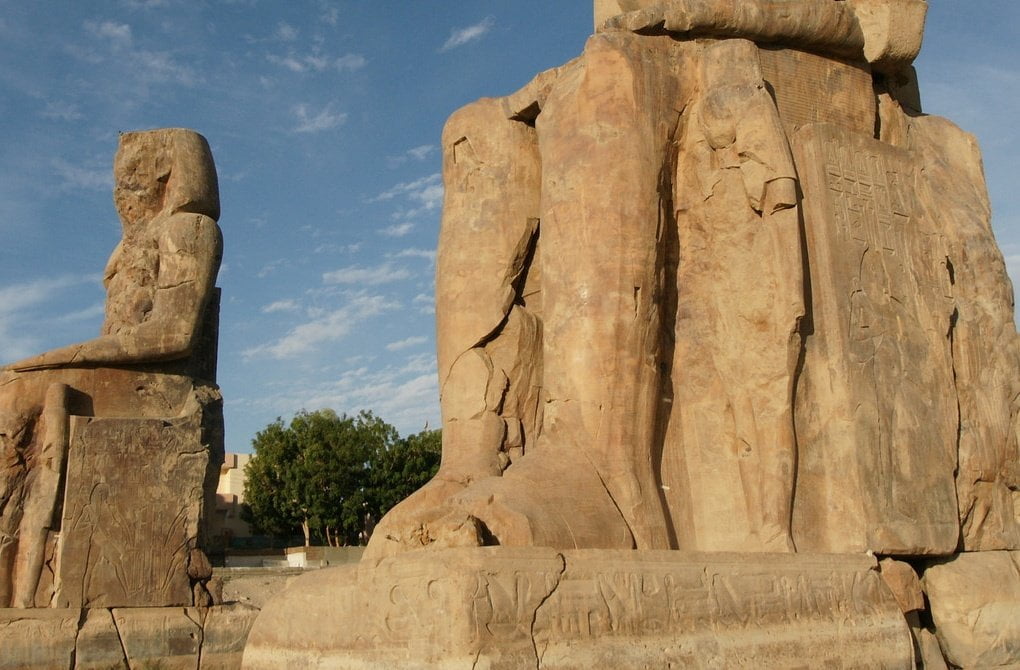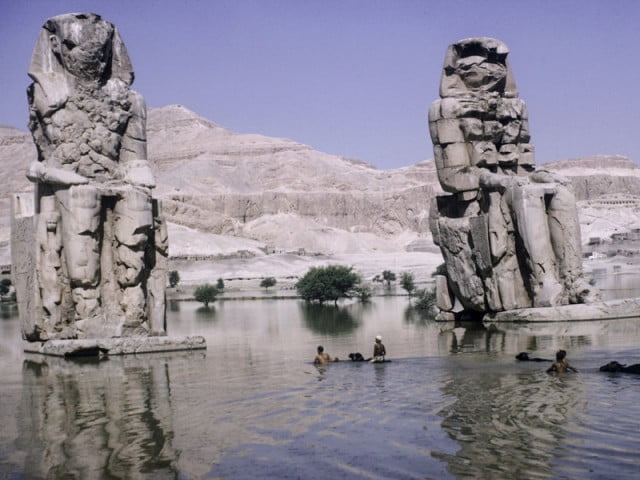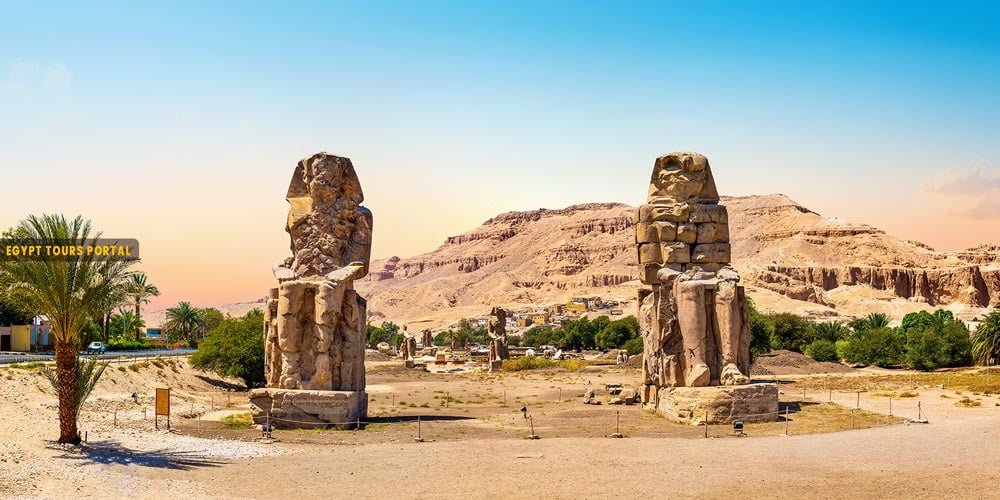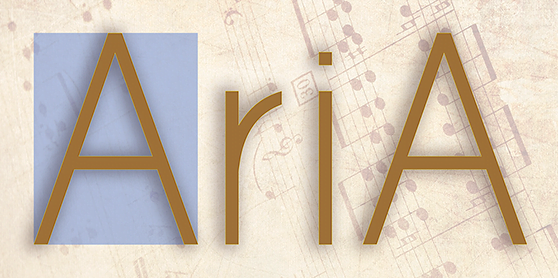
Memnon was a hero of the Trojan War. He was also an Ethiopian king who led his armies from Africa to Asia to defend a besieged city. He was eventually killed by Achilles. These two statues usually refer to the entire Theban necropolis known as Memnonium
These faceless colossi (plural for 'colossus', meaning 'statue larger than life') are the first thing tourists see when they step out on the west bank of the Nile opposite Luxor. It's no surprise when you recognise their size: they rise 60 feet (18 m) above the plain and are estimated to weigh 720 tonnes each.
Carved from sandstone in quarries near Cairo, they were, according to Egyptologists, transported overland 420 miles (675 km) south to Thebes, or modern-day Luxor, as they were too heavy to be carried across the Nile.
Amenhotep III and the glory of Egypt
The statues of Pharaoh Amenhotep III, depicting him seated, were built to protect his funerary temple. This complex, the largest on the west bank, is still being studied by archaeologists.
Pharaoh Amenhotep III lived during the New Kingdom period from 1570 to 1069 BC, when Egypt became a land of international power and wealth. His father left him a stable empire when he was only twelve years old. He married Tiya, who was given the title 'Great Royal Wife'. Not even Amenhotep's mother was awarded this title, reflecting the greatness of Pharaoh Amenhotep and his wife Tiye as a married couple.
He had a magnificent vision of the land in which he ruled. This can be seen in the 250 buildings, temples, styles and statues that were built during his miraculous reign. One of his fascinating palaces is the palace at Malkat, on the west bank of the Nile near Thebes. This amazing place contains many rooms, a festival hall, gardens, many libraries, kitchens, conference rooms and the temple of Amun.

The Colossi of Memnon. The greatest monument of ancient Egypt
So the legend goes...
The Colossi of Memnon were completed in 1350 BC, and by the time of the Greco-Roman era, more than a thousand years later, they were already a popular tourist attraction. According to legend, the northern statue whistled at sunrise - possibly caused by a crack in its body caused by an earthquake in 27 BC. Attributing the statue to the African king Memnon, ancient Greek and Roman visitors considered it fortunate to hear the statue's song, believing it to be the cry of the kinggreeting his mother Eos, the goddess of sunrise.




 and then
and then 
